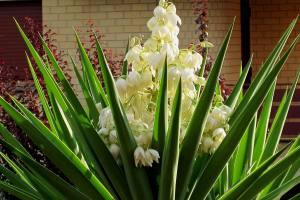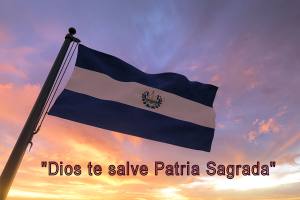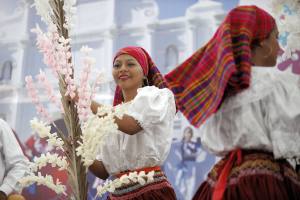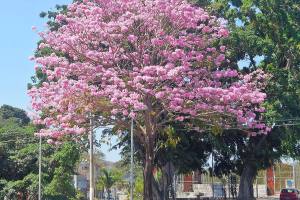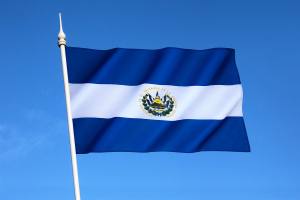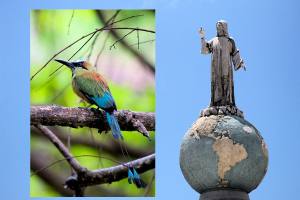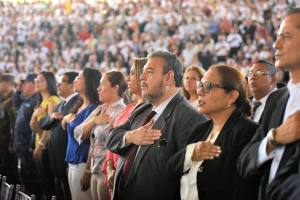The National Coat of Arms and the Flag are part of the eight patriotic symbols of El Salvador, emblems that represent a gentle and kind people. Where its values and ideals have been defined throughout its history and that today we can enjoy its cultural richness.
Origin and history of the National Coat of Arms of El Salvador
The current National Coat of Arms was adopted on May 17, 1912, the date which also ordered the creation of the Flag of El Salvador. At that time, the nation’s president was Dr. Manuel Enrique Araujo, who approved the contest promoted by the Ministry of War and Navy.

NATIONAL COAT OF ARMS OF EL SALVADOR. Photo from the public domain of Wikimedia Commons.
The contest received 30 different designs, but Rafael Barraza Rodríguez’s stood out above the rest. It began to be used on September 15 of the same year, and by 1916, some changes suggested by Barraza himself were approved.
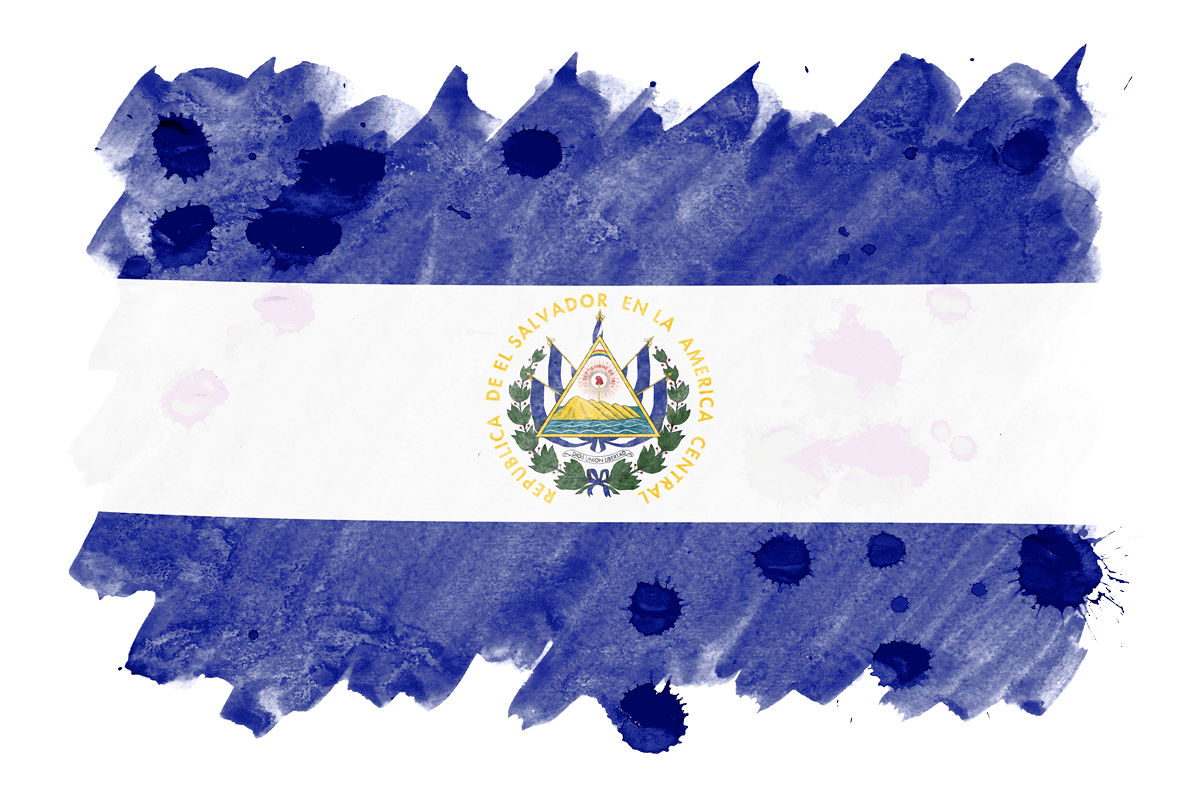
However, it is not the only National Coat of Arms that El Salvador has had because before this one, four others now occupy a place in history. Let’s see each one of them.
National Coat of Arms of the United Provinces of Central America (1823-1825)
Created this first National Coat of Arms on July 2, 1823, as part of the agreement by the countries that integrated the United Provinces. Did it after the region became an independent state.
That is, it was no longer linked to Spain or any other country, and it began to be used officially on August 21 of the same year.
Coat of Arms of the Federal Republic of Central America (1825-1841)
In 1824 a new National Constituent Assembly was held, which agreed to change the name of the nation and adopt a new National Coat of Arms, but without changing the colors and shape of the National Flag.
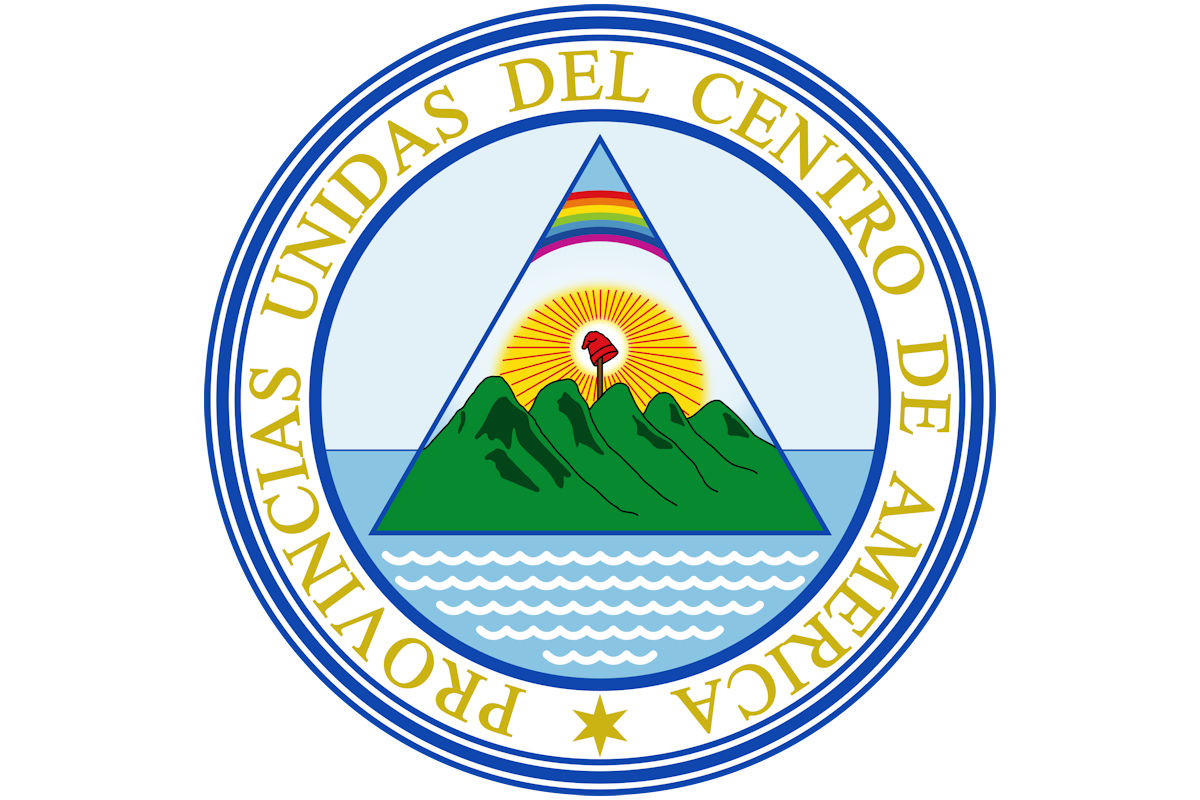
The decree came into effect in 1825, and the federation states included their name in the inscription to define the region they represented. On the other hand, although the Federal Republic was dissolved in 1839, the coat of arms continued to be used for a few more years.
National Coat of Arms of El Salvador (1865-1912)
This National Coat of Arms was the first one created exclusively for El Salvador during the presidency of Francisco Dueña. Made the decree on April 28, 1865; among its characteristics, its flags with the flag’s colors stood out.
It was composed of 3 blue stripes and two white stripes, a box with the stars representing the departments of El Salvador.
National Coat of Arms of the Major Republic of Central America (1895-1898)
They created this last coat of arms as part of the creation of the Republic of Central America, which was composed of Nicaragua, Honduras, and El Salvador. The union occurred on June 20, 1895, and created the Amapala Pact.
By August, confirmed the pact and the federation’s coat of arms and flag were adopted again. Later, in 1898, a coup d’état ended up declaring El Salvador’s separation; therefore, it officially used the National Coat of Arms and the Flag of 1865.
What do the elements that make up the National Coat of Arms of El Salvador represent?
Rafael Barraza Rodríguez did not win the contest to create the National Coat of Arms design for the elements that integrate it. But for the meaning and what each of them represents. We are talking about a symbol that keeps all the identity of its people.
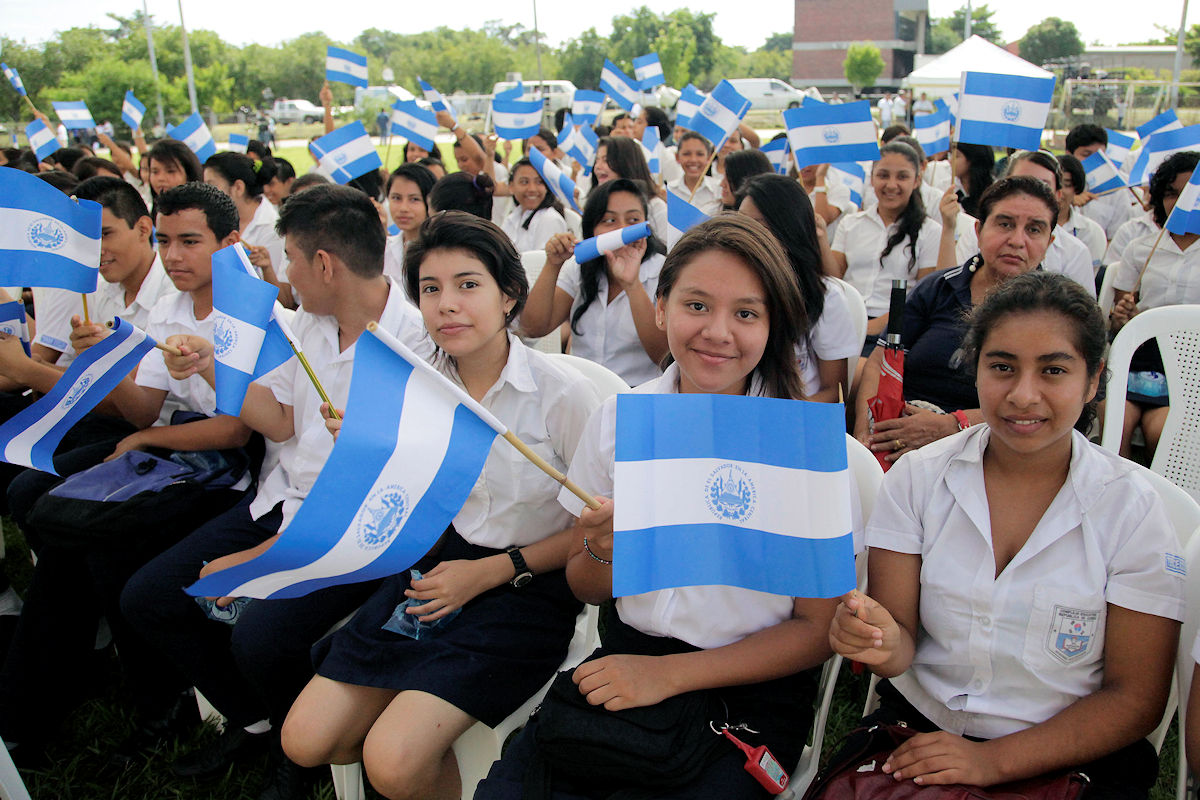
The equilateral triangle
Each part of the National Coat of Arms triangle represents freedom, harmony, and equality. Values reflected in the nation’s three powers and that it also means.
The oceans
Inside the triangle, you can see the volcanoes surrounded by the Pacific and Atlantic oceans. Both have been placed to represent the waters surrounding the continent. Their meaning is centered on the peace between the sister nations and their development.
The 5 volcanoes
The five volcanoes in the National Coat of Arms represent all the beauty and natural wealth in El Salvador. Also, its extensive volcanic mountain range and the countries that once integrated the United Provinces.
The sky by the rainbow
These elements together symbolize glory, peace, and heroism. Together, they are a reference to the importance of the heroes’ struggle for the nation’s freedom.
Cap on volcanoes
The Phrygian cap on the National Coat of Arms is where the exaltation for a free nation converges. That is why a legend symbolizing the independence of Central America has been incorporated among the reddish flashes around it.
The 5 pavilions
The five pavilions surrounding the shield have been placed to commemorate the independence of each nation that emerged after Central America’s liberation.
Legends
In the National Coat of Arms, we find three essential legends for El Salvador, these are:
- September 15, 1821: the date on which the Independence of Central America.
- God, Union, and Liberty: represent the values and quirks of the country’s inhabitants.
- The Republic of El Salvador in Central America: the badge that makes the Salvadoran people proud worldwide.
Olive branches
Finally, we have two intertwined olive branches around the triangle and the pavilions. Its 14 shoots represent each department of El Salvador, united by the same sentiment and ideology.
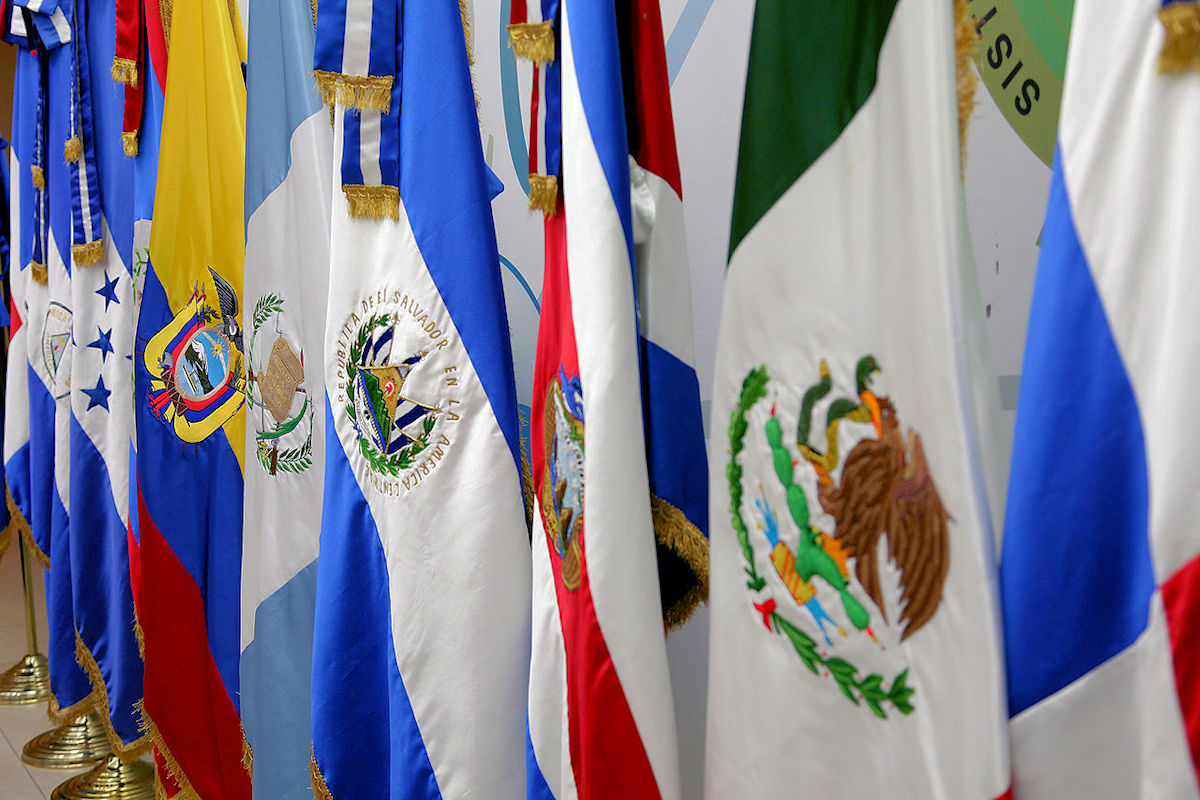
In short, the National Coat of Arms is the result of a long history of heroes who gave their lives to build a free nation. In which opportunities for development, joy, and kindness of its people abound.
A whole set of characteristics makes El Salvador a country worth visiting, knowing, and enjoying.
